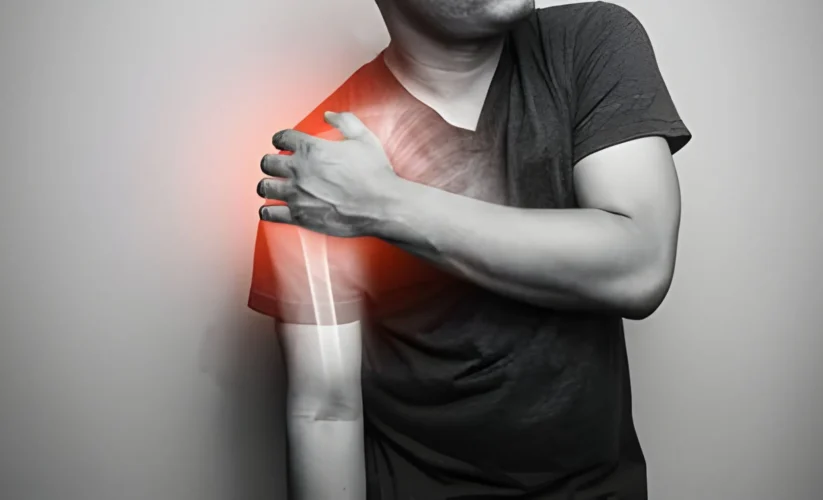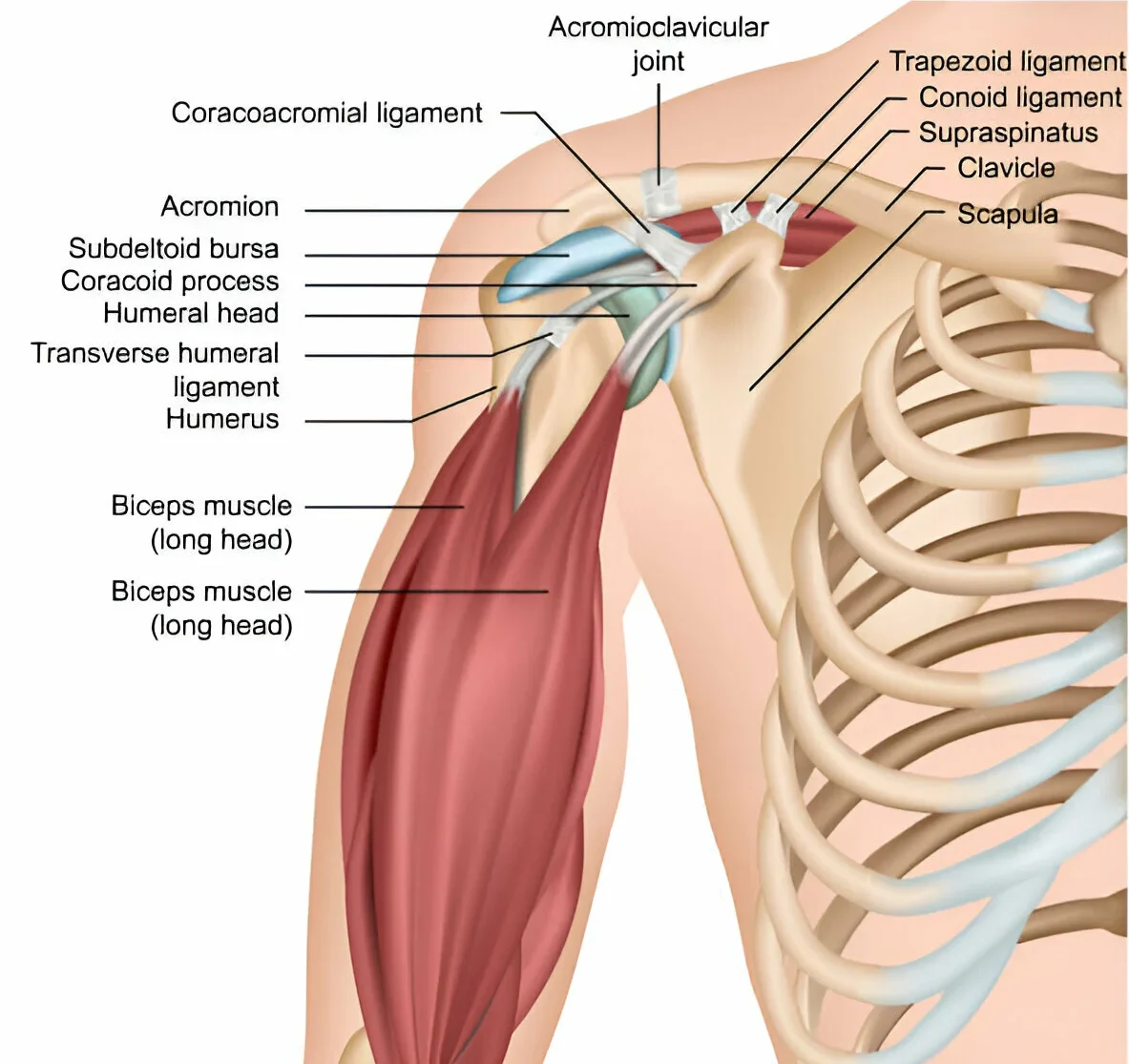
Shoulder Pain Diagnosis Chart Can Help You Diagnose Your Pain
A shoulder pain diagnosis chart is a tool for determining the possible cause of your shoulder pain. It commonly categorizes discomfort by location and takes into account additional characteristics such as symptoms and mobility restrictions.
The shoulder pain diagnosis chart cannot provide a definitive diagnosis, but it can point you in the direction of possible solutions. For example, pain at the front of the shoulder may indicate rotator cuff difficulties, whereas back pain could be caused by muscle strain or poor posture.
How Shoulder Pain Diagnosis Chart Work
Shoulder pain diagnosis charts are like a roadmap to understanding your ouch. They typically use diagrams of the shoulder divided into zones. Each zone corresponds to a possible culprit behind your pain, like tendons, muscles, or joints. By pinpointing where it hurts, the chart suggests potential causes.
Shoulder Pain Diagnosis Chart Anatomy Elements

- Zones: The chart will likely divide the shoulder area into sections. These zones could be front, back, top, or specific regions like the shoulder blade. Each zone represents underlying structures that can cause pain when injured.
- Bones: The major bones involved in the shoulder joint are the humerus (upper arm bone), scapula, and clavicle (collarbone). The shoulder pain diagnosis chart might highlight these bones and how pain near them could indicate injury to the joint itself or a nearby fracture.
- Tendon: Tendons are the tough tissues that connect muscle to bone. The rotator cuff, a group of muscles crucial for shoulder movement, has tendons that attach to the humerus. Pain in specific zones could indicate inflammation (tendinitis) or tears in these tendons.
- Ligaments: These are strong bands of tissue that connect bones to provide stability. The shoulder joint relies on ligaments for stability. Pain in certain zones might suggest a ligament sprain from overstretching or a tear from a forceful impact.
- Muscles: The rotator cuff muscles, along with others in the chest, back, and upper arm, all play a role in shoulder movement. The chart might differentiate pain arising from a specific muscle strain or overuse.
Types of Shoulder Pain
- Rotator Cuff Tendinitis:
It stands as the most prevalent source of shoulder discomfort, arising when the tendons of the rotator cuff endure inflammation or irritation. These tendons, pivotal in stabilizing the shoulder joint and facilitating its movement, often manifest pain in the anterior region of the shoulder, exacerbated by actions involving overhead movements.
- Rotator Cuff Tear:
It denotes a graver condition wherein one or more tendons of the rotator cuff tear either partially or entirely. This disruption leads to notable pain, weakness, and restricted shoulder mobility, predominantly sensed in the anterior shoulder and intensified during specific movements.
- Bursitis:
Fluid-filled sacs serving to cushion the bones, tendons, and muscles encircling the shoulder joint. Subacromial bursitis, the prevalent form, occurs when the bursa beneath the acromion becomes inflamed.
- Arthritis:
A broad term encompassing joint inflammation, manifests in various forms affecting the shoulder, including osteoarthritis and rheumatoid arthritis. Arthritic pain typically presents as a dull ache, exacerbating with activity or nocturnally.
- Frozen Shoulder:
Stiffness and discomfort within the shoulder joint, often evolving gradually and impeding full range of motion.
- Shoulder Impingement:
Arises when the rotator cuff tendons or bursa endure compression amid the acromion and the humeral head.
- Dislocated Shoulder:
Emerges when the humeral head dislodges from the shoulder blade socket, culminating in intense pain, weakness, numbness, and bruising.
- Labral Tear:
It results from sudden trauma or repetitive strain, affecting the cartilaginous ring encircling the shoulder joint. Pain typically originates deep within the joint and exacerbates with specific movements.
- Bicep Tendinitis:
It denotes inflammation of the tendon linking the biceps muscle to the shoulder joint, often causing anterior shoulder pain that intensifies during pulling or lifting activities.
Medical Benefits
Shoulder pain diagnosis chart offer several medical benefits. They can empower you with initial knowledge about the source of your pain based on location. This can ease anxiety and prompt you to seek professional help.
By highlighting common causes in different zones, the shoulder pain diagnosis chart can guide discussions with your doctor, allowing you to explain your symptoms more effectively.
The Limitations
Shoulder pain diagnosis chart have some limitations. They can’t pinpoint the exact cause of your pain. The same zone might correspond to multiple injuries. Additionally, charts can’t assess the severity of the issue. A minor strain and a major tear can present similarly on a chart. Individual variations in anatomy and pain perception aren’t considered.
The shoulder pain diagnosis chart can’t replace a doctor’s expertise. A physical exam, medical history, and potentially imaging tests are crucial for an accurate diagnosis and proper treatment plan.
Treatment Options for Shoulder Pain
The good news is that most shoulder pain can be effectively treated. Your doctor’s diagnosis will determine the particular route to take. In many cases, rest, physical therapy exercises to enhance strength and flexibility, and pain medication can be extremely beneficial. For more serious diseases, injections or even surgery may be required.
Shoulder discomfort can be an annoying and persistent issue but knowing the exact cause of pain is the key to the solution. Shoulder pain diagnosis chart can be a helpful tool to figure out causes of pain often through simple deduction of location and symptoms observed.





